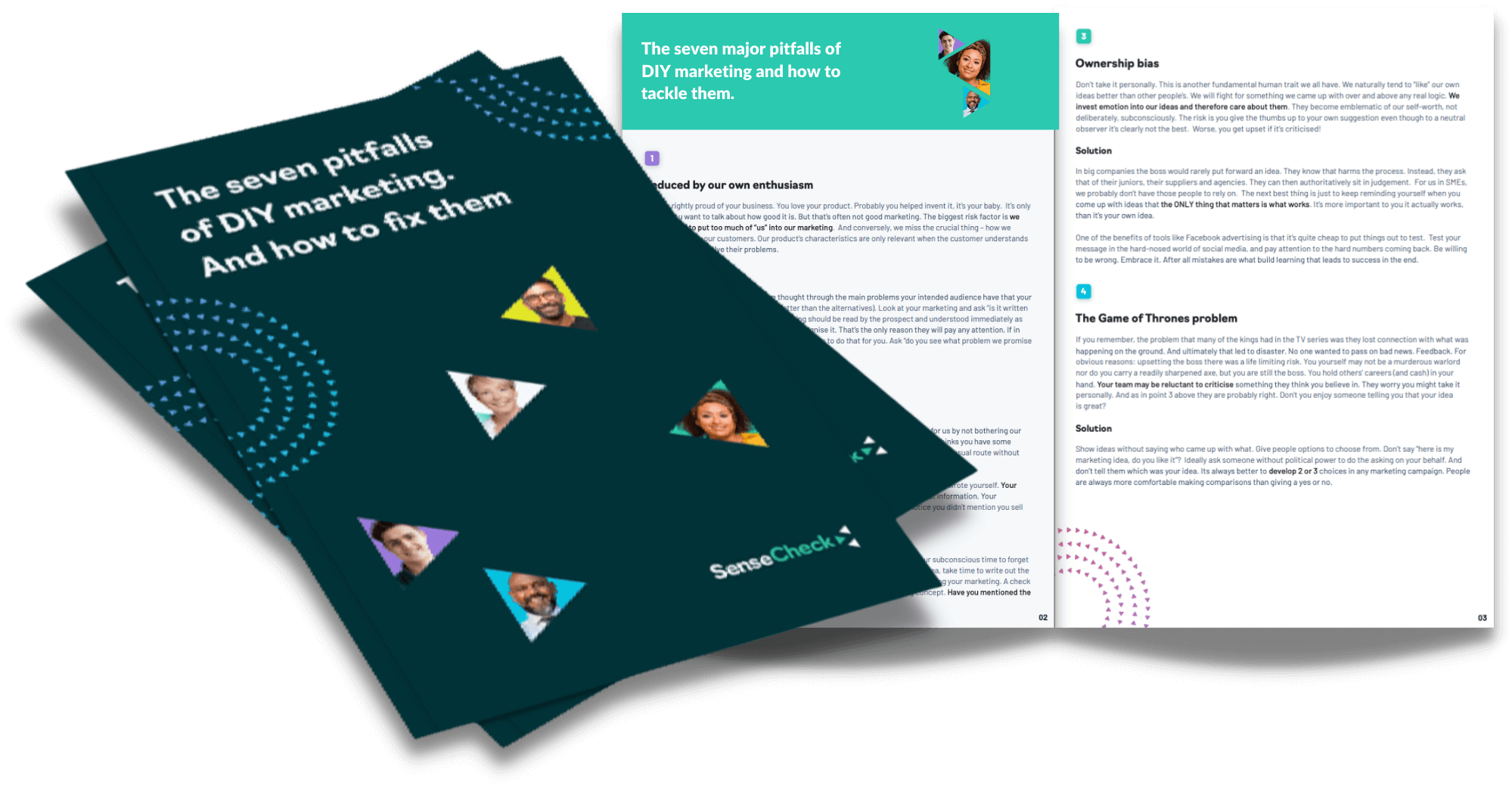
If you use an external designer or agency to develop any marketing activity then a good clear brief is absolutely crucial.
The designers can only “create” based on what you tell them and here the motto has to be “garbage in garbage out”. The brief is your opportunity to make sure that you provide clear direction and insight into what you want to achieve and why you want to achieve it.

The vaguer you are, the more challenging it is for the designer to solve the problem given to them. Vague briefs result in lost time and frustrations for both parties involved, as the designer has little choice but to explore a wide range of creative options in order to try to gauge what they think you might want.
The risk is either that you just don’t get good ideas, or maybe worse you get stuff that looks good but isn’t going to do the job you want. (The former is frustrating but the latter wastes money) Make the designers’ job easier and save your money by giving them the freedom of a tight brief.
What helps create the best understanding for the creative teams?
Investing time and effort into writing the brief is critical. It is the opportunity for you to get your thinking straight, to be absolutely clear on what you want to achieve and why you want to achieve it. This clarity of thinking makes it easier for the creatives to interpret and get a clear view on your requirements.
1. Make it simple and concise
The clue is in the name “brief”. The best briefs can be summarised on one page. Don’t make them too long and rambling, often briefs can just be a dumping ground for all the stuff that’s going on in the industry and it is left to the recipient of the brief to pick though it and try to make sense of it and sift out the pertinent information. Providing the right amount of background is important but just include what is relevant.
2. Think about your audience
Your brief is helping to bridge the needs of two worlds the business and the creative so keep the language simple and straightforward. A brief is not an exercise in intellectualism. Don’t lose your audience by speaking in unnecessary business-speak or industry jargon. What may be everyday language to you may seem like a foreign language to someone who does not live in your world day in and day out so please don’t assume what is basic to you is the same for your designer.
3. Be clear and specific about why you are doing this, the goals you want to achieve and how you will measure change.
Clear objective setting helps determine the creative focus of the work so start here and aim to explain the business challenge in a nutshell. e.g. a problem with lost market share. Need to boost sales by encouraging brand reappraisal. Look to outline 3 clear objectives for the work and how you are going to measure the effectiveness of the work.
What are the top-line business, marketing and design objectives? Keep them short, factual and measurable.
1. Business objective (the impact you want)
2. Marketing objective (desired outcomes)
3. Design objective (desired output)
Identify how you want your key consumers to feel as a result of the work? What do you want the key outtake of the work to be?
Whatever your objectives are, be clear on what you want to move from and to, and how you are going to measure that change.
4. What does success look like?

Measure of effectiveness can be numerous and include things like:
Sales measures
Market/category information (in comparison to competitors)
Other financial measures
Brand measures
People measures
Environmental impact

Other awards / accolades
5. The job in a nutshell
A succinct, one line overview of what is required and the problem to be overcome. For example: Do you need to disrupt, standout and get noticed, navigate products or services, understand the product portfolio?
6. Who you are targeting
The brief has to tell the designer who you are targeting. What they currently think about, worry about (what problem you can solve), and what the message in this piece of activity is that you want to get across. Paint a pen portrait that describes their lives, with key attributes and insights into their behaviour that are relevant to this specific brief.
7. As a brand, what do we stand for?
Usually this will be based on your proposition but it is crucial to explain what you want that particular marketing idea to achieve in the short term.
Example questions to ask yourself: What is your cause, your reason for being? What are your values? What do you believe in. What is your personality and style of communication? How do you want to be perceived?
8. What are your distinctive assets?
What are the visual and verbal equities that you feel you can own, such as colours, shapes, logos, or a particular style of illustration, photography or language?
9. What’s the market like? Who are your competitors?
What condition is the market in? Massive growth, heavy decline, etc. Who’s the enemy and why? Pick out any key competitors and highlight any areas that are working strongly for them. Include a photo if possible. Consider what other things typify the category.
10. What are the mandatories?
Outline any key information that is essential to adhering to the existing guidelines and fulfill the brief. What are the deliverables you want to see from the designer by stage?
e.g. Mac visuals, 3 x design routes, home screen and other key pages information architecture, wireframes, environment sketches, Brochure cover and spreads etc.
11. Check for understanding.
It’s a good idea to ask the recipient of the brief to talk to you about the brief to make sure they understand it before burning your time (if you pay by the hour or by stage). Ask them to digest the brief and feedback their understanding so you can sign that off before you press go on any creative work. This will save time and ensure understanding and clear up any outstanding questions.
Remember: Garbage in, garbage out. A good brief saves time and money, as well as focussing your mind on your goals and what you need to see from the creative team.
